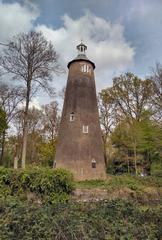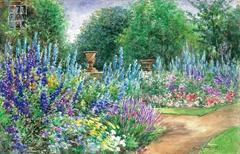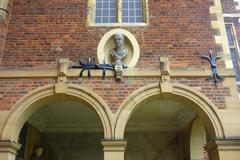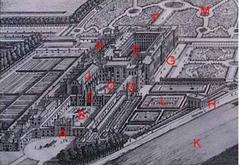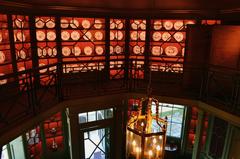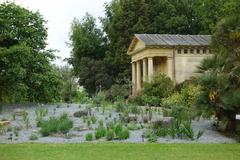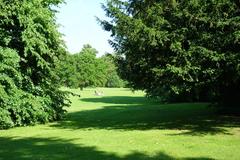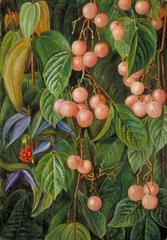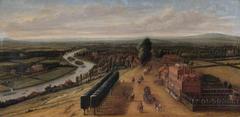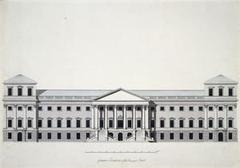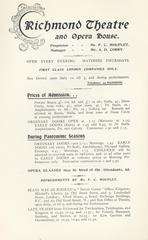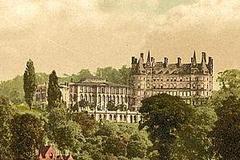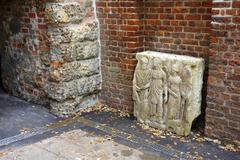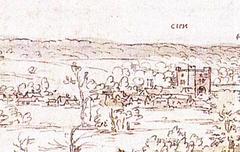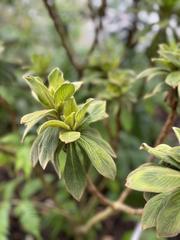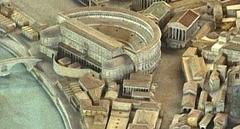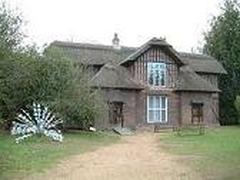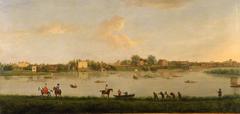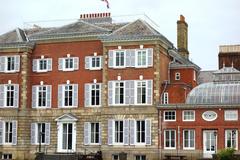Diana Fountain Richmond: Visiting Hours, Tickets, and Complete Historical Site Guide
Date: 14/06/2025
Introduction
The Diana Fountain, majestically situated within Bushy Park in Richmond upon Thames, is a celebrated landmark that intertwines royal history, artistic achievement, and the serenity of nature. Also known as the Arethusa Fountain, it is a remarkable example of 17th-century Baroque sculpture and landscape design. Commissioned by King Charles I and crafted by the French sculptor Hubert Le Sueur, this bronze masterpiece has journeyed through several royal residences before finding its enduring home at the heart of Bushy Park. Today, the Diana Fountain stands not only as a testament to England’s cultural heritage but also as a tranquil retreat for locals and visitors alike. This comprehensive guide provides detailed information on visiting hours, ticketing, accessibility, historical context, and nearby attractions to help you plan an enriching visit to one of London’s most iconic historical sites (Royal Parks, Culture Themes, Things Helen Loves).
Contents
- Introduction
- History and Artistic Significance
- Bushy Park: Setting and Landscape
- Visiting the Diana Fountain: Practical Information
- Visitor Tips and Experiences
- Wildlife and Natural Setting
- Seasonal Highlights
- Richmond and Surrounding Attractions
- Frequently Asked Questions (FAQ)
- Visuals and Interactive Media
- Internal and External Links
- Summary and Recommendations
- Sources
History and Artistic Significance
Royal Commission and Early History
The Diana Fountain was commissioned in 1637 by King Charles I as a gift for Queen Henrietta Maria. Renowned sculptor Hubert Le Sueur created the fountain, originally intended for Somerset House. The fountain’s design, attributed to architect Inigo Jones, featured Diana—the Roman goddess of hunting and nature—adorned with water nymphs and mythological figures.
During the mid-17th century, the fountain was moved to Hampton Court Palace’s Privy Garden by order of Oliver Cromwell. Its identity alternated between Diana and Arethusa (a Greek water nymph) in royal inventories, reflecting its mythological ambiguity.
Relocation and Landscape Design
In the early 18th century, Sir Christopher Wren, under the reigns of William III and Mary II, orchestrated the fountain’s relocation to Bushy Park. Placed at the center of a grand circular pool at the head of Chestnut Avenue, the Diana Fountain became the focal point of Wren’s visionary landscape design. The marble base, attributed to John Smout, and the gilded bronze statue elevated the fountain to a symbol of royal grandeur and artistic sophistication (Culture Themes).
Cultural Legacy
The Diana Fountain stands as the oldest statue in London’s Royal Parks, embodying centuries of royal patronage and evolving artistic trends. Its flowing water, supplied by the Longford River—an artificial waterway built by Charles I—symbolizes abundance and renewal, key themes in European garden design (Eden Bengals). The fountain’s continued restoration and Grade I listing attest to its enduring cultural and historical significance.
Bushy Park: Setting and Landscape
Park Overview
Bushy Park spans over 445 hectares (1,100 acres), making it the second largest of London’s Royal Parks (Royal Parks). The park’s rich history traces back to Tudor times, serving as a royal hunting ground for Henry VIII and his successors. Today, Bushy Park is celebrated for its diverse habitats, ancient woodlands, formal gardens, and the iconic Chestnut Avenue—a mile-long, tree-lined boulevard designed by Wren.
Historical Layers and Features
The park’s landscape is layered with history, from Bronze Age artifacts to the 18th-century Upper Lodge Water Gardens. The Longford River, an engineering marvel, continues to nourish the park’s water features, including the Diana Fountain (ChimpTrips). Bushy Park also played a vital role during World War II, serving as a military base and headquarters for the D-Day landings.
Visiting the Diana Fountain: Practical Information
Location and Access
- Address: Bushy Park, Richmond, London TW10 5HS. The fountain is near Hampton Court Gate, easily accessible from the main park entrances.
Visiting Hours
- Park Hours: Open to pedestrians 24 hours a day, 7 days a week.
- Vehicle Access: 6:30 am to 9:00 pm daily.
- Fountain Access: During general park hours.
Tickets and Admission
- Entry: Free of charge for both the park and the Diana Fountain.
- Guided Tours: No regular tours focus solely on the fountain, but occasional guided walks and heritage events are available. Check the Royal Parks events page for the latest updates.
Accessibility
- Paths: Level and suitable for wheelchairs and strollers, though some natural terrain may be uneven.
- Facilities: Accessible parking is available near main entrances. Accessible toilets are located at key points within the park (Royal Parks Accessibility).
- Assistance Dogs: Welcome throughout the park.
Maintenance Notice
The Diana Fountain is undergoing scheduled cleaning and maintenance until early 2025. The immediate statue area may be temporarily inaccessible, but the surrounding park remains open (Royal Parks).
Getting There
- By Train: Nearest stations are Hampton Court and Teddington, both a short walk from Bushy Park.
- By Bus: Several routes serve the park entrances.
- By Car: Limited parking is available; public transport is recommended during peak periods.
Visitor Tips and Experiences
- Best Time to Visit: Early mornings or late afternoons for quieter ambiance and optimal photography lighting.
- Photography: The approach along Chestnut Avenue and the fountain itself provide excellent photo opportunities, especially in spring and autumn.
- Picnics: The lawns surrounding the fountain are ideal for picnics—bring a blanket and enjoy the view.
- Wildlife Observation: Bushy Park is home to red and fallow deer, various bird species, and ancient anthills.
Wildlife and Natural Setting
Bushy Park is a designated Site of Special Scientific Interest (SSSI), supporting rare invertebrates and ancient habitats. The Diana Fountain’s pond attracts waterfowl, including swans, geese, and ducks, offering visitors a vibrant natural setting (ChimpTrips).
Seasonal Highlights
- Spring: Woodland and Water Gardens bloom spectacularly.
- Summer: Lush greenery and long daylight hours.
- Autumn: Dramatic deer rutting season and colorful foliage.
- Winter: A peaceful, frosty landscape perfect for tranquil walks (Do You Speak London).
Richmond and Surrounding Attractions
- Hampton Court Palace: Historic royal residence nearby.
- Kew Gardens: World-famous botanical gardens within easy reach.
- Richmond Town Centre: Offers shops, cafes, and riverside walks.
- Walking Routes: Thames Path, Capital Ring, and other scenic trails (Visit Richmond).
Frequently Asked Questions (FAQ)
Q: What are the Diana Fountain visiting hours?
A: Bushy Park is open to pedestrians 24/7; vehicle access is from 6:30 am to 9:00 pm.
Q: Is there an entry fee?
A: No, access to Bushy Park and the Diana Fountain is free.
Q: Are guided tours available?
A: Occasionally—check the Royal Parks website for updates.
Q: Is the fountain accessible to wheelchair users?
A: Yes, with mostly flat paths, though some areas may be uneven.
Q: Is the fountain currently open?
A: The fountain is undergoing maintenance until early 2025, but the park remains accessible.
Q: Can I feed or approach the deer?
A: No, for safety and conservation reasons.
Visuals and Interactive Media
- Include high-quality images of Diana Fountain with alt text such as “Diana Fountain at Bushy Park Richmond” and “Chestnut Avenue leading to Diana Fountain.”
- Embed an interactive map showing Bushy Park’s location, entrances, and the Diana Fountain’s position.
- Add a virtual tour link or video if available.
Internal and External Links
Summary and Recommendations
The Diana Fountain at Bushy Park is a jewel of London’s historical and natural heritage. Its journey from royal commissions and Baroque artistry to public landmark status reflects centuries of cultural significance. With free entry, accessible facilities, and proximity to other Richmond attractions like Hampton Court Palace, it offers an enriching experience for all visitors. To make the most of your visit, check for maintenance updates, visit during quieter periods, and explore the park’s wildlife and scenic walks. Download the Audiala app for guided tours and the latest visitor information, and follow related social media channels for event updates. Don’t miss the chance to immerse yourself in this remarkable blend of history, art, and nature (Royal Parks, Visit Richmond, Culture Themes).
Sources
- Royal Parks: Bushy Park Monuments
- Culture Themes: Fountains in London
- Things Helen Loves: Bushy Park Guide
- Discover Walks: Richmond Park Visit Guide
- Visit Richmond
- Eden Bengals: Fountain Symbolism
- Do You Speak London: Bushy Park
- ChimpTrips: Bushy Park Activities
